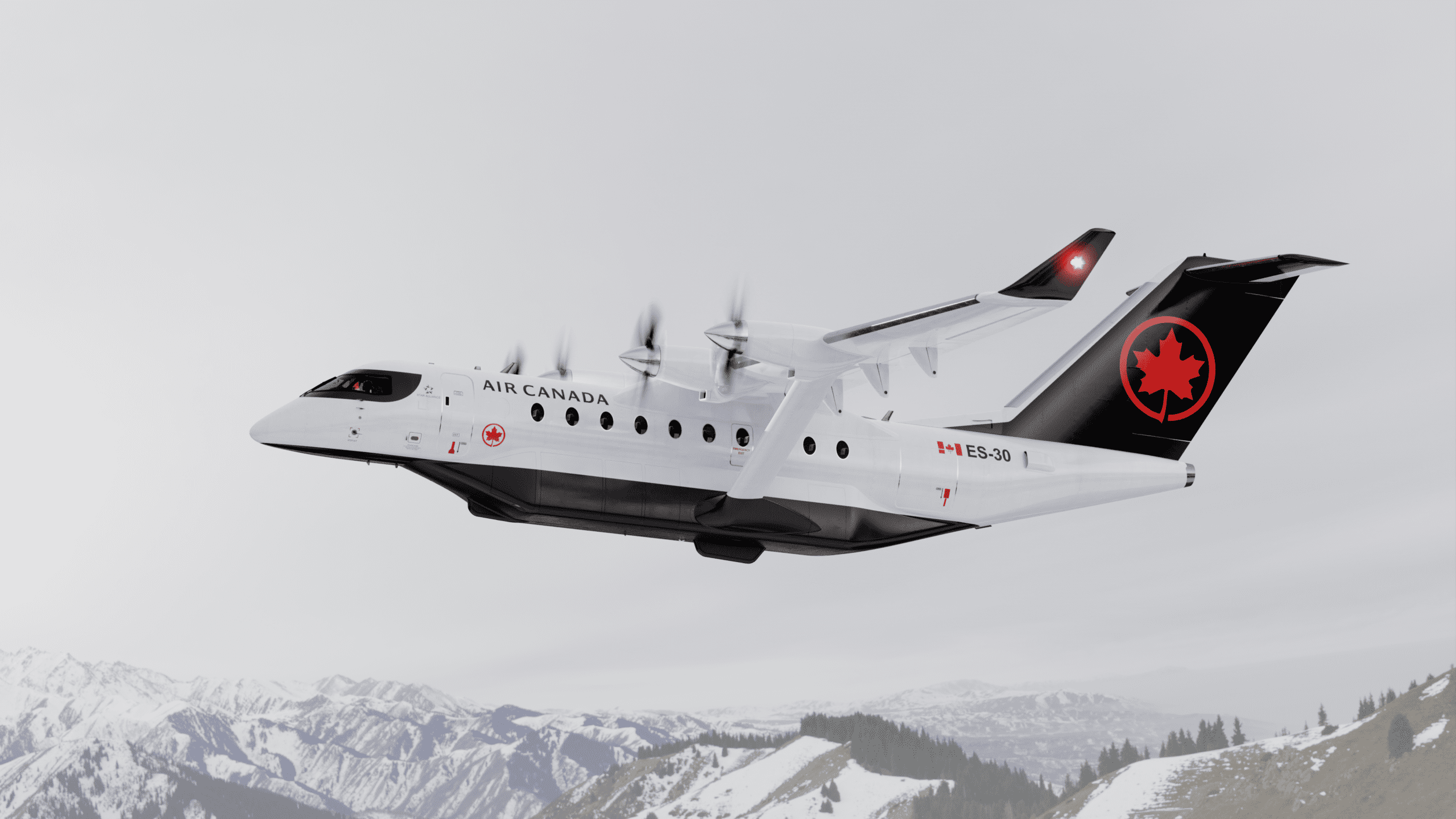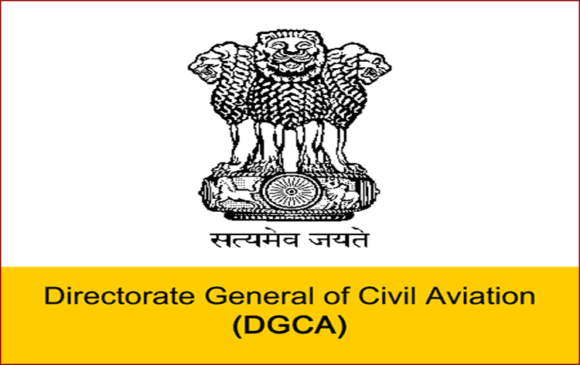
Air Canada Livery ES 30
Swedish start-up Heart Aerospace has redesigned its full-electric regional aircraft from a 19-seater to a 30-seater. The airframer also announced Air Canada and Saab as new minority shareholders of the project, while also announcing new orders. Heart unveiled the news on September 15 during its Hangar Day in Gothenburg, where the company is based. Heart upsizes full-electric aircraft to make it a 30-seater.
Heart has been developing the ES-19 since 2019. The high-wing aircraft has four electric motors that are battery-powered, giving it a range of 400 kilometers. Last June, Heart said that it would seek certification under EASA CS-25 or FAA Part 25 specifications for larger aircraft over 8.618 kilograms.
Behind the scenes, the start-up has been working on an extensive redesign of the aircraft. Still a four-engine aircraft, its fuselage has been extended to include thirty passengers in a three-abreast cabin configuration. At the back of the cabin is an internal luggage compartment. Under the fuselage is a big, angular, external belly that serves for stowing the batteries. On the ES-19, the batteries were in the nacelles.
“The ES-19 was tailor-made for the Nordic markets. But as we made the announcements, we started hearing from all over the world. There was a similar need in the rest of Europe, the US, Canada, and New Zealand. What we started as a local, niche product had a global appeal”, CEO Anders Forslund explained the reasoning behind the design change. “To make an airplane that can fly everywhere, the ES-19 needed to change. We needed to change the luggage capacity, which was really to do with a CS-23 aircraft because it has a weight limit of 8.600 kg. When you already carry a few kilograms of batteries, that becomes very challenging.” The Heart also needed to comply with Part 121 regulations for safe operations, plus abiding by rules that prescribe 45 minutes/100 nautical miles of fuel/energy reserves. Hence the upgrade to a bigger aircraft.
The cabin has 30 seats in a 2-1 configuration. (Heart Aerospace)
Turbo generators to extend the range
Another significant change is that the ES-30 no longer is a pure electric aircraft. Yes, it can fly 200 kilometers on batteries only, but it now has a range extender in the form of two turbo generators at the rear of the aircraft that run on sustainable aviation fuel (SAF). The generators are only used when extra range is needed. With them, the range increases to 400 kilometers with thirty passengers. If five seats remain empty, the 25-seat version can fly even 800 kilometers at a maximum altitude of 20.000 feet. Recharging the lithium-ion batteries will take thirty minutes in the fast option or fifty minutes in a standard mode.
The initial range of 200 kilometers is what the market wants, says Forslund. “We think there are more aircraft flying these routes all electrically than we can ramp up production in the early years. But it is also important for airlines to be able to fly further when needed. So when we kick in the turbo generator, we can fly a lot further. If we fly 400 kilometers, we still have a fifty percent reduction in emissions compared to other turboprops.”
As battery technology evolves, Heart expects to squeeze out more range of up to 300 kilometers in the mid-2030s and to 400 kilometers by the end of the next decade. The hybrid version should be able to fly 500 kilometers with thirty passengers in the mid-2030s and 600 km by the late 2030s. Cash operating costs should be comparable to a 50-seater, with “significantly better” trip costs. “The main problem with small aircraft is not that they don’t fly far enough, it is unit economics. We think that this aircraft can compete with much larger, 50-seat turboprop aircraft.”
Air Canada and Saab new investors and shareholders
Heart Aerospace also announced new partners for the program. Swedish aerospace company Saab is investing $5 million in the company, as is Air Canada. The airline has also placed a purchase agreement for thirty ES-30s.
CEO Michael Rousseau said in a media statement: “Already, Air Canada is supporting the development of new technologies, such as sustainable aviation fuels and carbon capture, to address climate change. We are now reinforcing our commitment by investing in revolutionary electric aircraft technology, both as a customer for the ES-30 and as an equity partner in Heart Aerospace.”
Swedish lessor Rockton Air Leasing, which used to have an MoU for the Mitsubishi MRJ90, has signed a Letter of Intent for forty ES-30s.
Heart says that previous commitments for the ES-19 have been converted to the ES-30. They include orders from United Airlines and Mesa Airlines for a combined 200 aircraft plus 100 options. Braathens, Icelandair, and Sounds Air have also confirmed Letters of Intent. SAS, which has been a low-profile partner of Heart since 2019, has announced a Letter of Support for an unspecified number of ES-30s. Total LoIs now stand at 96 aircraft, Heart says. Lessors CDB Aviation and VMO take an advisory role for now.
EIS in 2028
Heart intended to bring the ES-19 to the market in 2026, but the redesign means that the airframer needs more time. It now plans for certification in 2028 and has already applied for a type certification with EASA. A proof-of-concept aircraft should be rolled out in 2024, with flight testing planned to start in 2026.
The batteries are positioned in the bulky belly of the ES-30. (Heart Aerospace)
The 100-strong design team is now finalizing the design specifications and at the same time preparing for the industrialization of the aircraft, for which it has applied for a production organization in Sweden. Manufacturing, assembly, headquarters, and its own runway will be done from 2024 in a new Heart Aerospace campus called ‘Northern Runway’ at Säve Airport close to Gothenborg.
In November 2021, Heart signed an agreement with Aernnova to design and manufacture the fuselage, while MSB has been contracted for the interior design. Latecoere will provide the doors, while Garmin supplies the “brain of the aircraft” or the avionics for the fully fly-by-wire aircraft. “We want to learn our lessons before we finalize the design, using our digital twin”, said Chief Engineer, Markus Kochs-Kämper. A full-scale ‘iron bird’ or integrated test facility that includes a full-flight simulator of the ES-30 has already been built.
Views: 122






